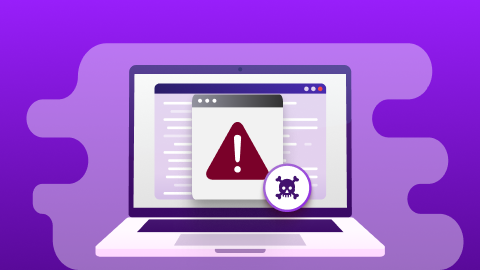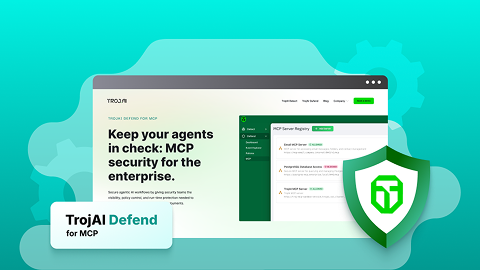This blog is based on excerpts from a recent Securing AI webinar titled Agentic AI Red Teaming: How to Secure the Next Generation of Autonomous AI. This webinar featured a conversation between Lee Weiner, CEO of TrojAI, and Ken Huang, AI researcher and author about agentic AI red teaming.
Introduction: The Shifting AI Security Landscape
Artificial intelligence is quickly transforming from chatbots that simply answer questions to agentic systems that take actions. Generative AI brought breakthroughs in language modeling, but the focus has shifted to agentic AI, where reasoning, tool use, and autonomous execution drive even more value.
This evolution introduces new security questions. Can we trust an AI agent’s reasoning chain? How do we account for deception and hallucinations? Most importantly, how do we secure environments against vulnerabilities unique to these architectures, such as tool misuse, access control violations, and memory manipulation?
Why Enterprises Are Rushing Toward Agentic AI
The first wave of AI adoption was driven by chatbots. These were essentially question-and-answer systems. They delivered information, but they were passive.
Agentic systems are different. They are goal-oriented software that can execute workflows, chain tasks, and automate decisions. The business drivers are clear: productivity gains, new revenue opportunities measured in trillions of dollars, and long-term economic impact that could exceed the revolutions brought by PCs, cloud, and mobile computing.
No doubt, agentic AI will reshape the workforce. Though some roles will be displaced, history shows that technology cycles also create more roles than they eliminate. Agentic AI is set to follow that same trajectory.
Key Security Challenges in the Agentic Era
The shift from “read-only” generative AI to “read-and-write” agents introduces a deeper attack surface. Agents can trigger actions in production environments, making mistakes far more costly.
Identity is also a concern. Current identity and access protocols are not sufficient on their own. Agentic AI needs fine-grained delegation, where permissions are limited to a specific task and a specific duration. A resume-screening agent, for example, should never be able to access the full HR database.
The attack surface also expands into new areas: memory poisoning, planning manipulation, and vulnerabilities that play out across multiple steps of an agent’s workflow. Memory poisoning can introduce subtle corruption into the agent’s retained context, steering future decisions toward malicious ends without raising immediate suspicion. Planning manipulation alters the logic an agent uses to select and sequence tasks, allowing attackers to redirect workflows toward outcomes that serve their objectives rather than the enterprise’s. Multi-step vulnerabilities are particularly dangerous because they exploit the fact that agents often chain tool calls and decisions together. A small deviation early in the process can cascade into significant system-wide impact by the end. This shift means security professionals must think beyond isolated prompt-response testing and instead model the entire lifecycle of how agents reason, act, and re-use state over time.
Emerging Attack Vectors
As enterprises experiment with agentic AI, the attack surface is evolving in ways that differ from traditional software vulnerabilities. These systems are dynamic, adaptive, and often rely on third-party tools or external services to complete tasks. That reliance introduces new avenues of exploitation, particularly when agents make decisions autonomously and chain multiple steps together without human review. Early research has identified several recurring patterns that highlight how attackers may attempt to subvert these architectures.
Three patterns stand out in early research on agentic AI security:
- Tool poisoning: malicious code hidden inside an otherwise legitimate tool
- Puppet attacks: a seemingly benign server hides a malicious backend
- Rug pulls: tools build trust over time, then abruptly switch to malicious behavior
Mitigations include digital signatures on tool definitions, governance frameworks for agent-to-agent interactions, and stricter validation of tool behaviors before they are trusted in production.
Red Teaming Agentic Architectures
Traditional red teaming of generative AI often focuses on single-turn prompts and responses. While this is useful for establishing a baseline, it does not capture the complexity of agentic systems. Agents operate across multiple turns, make sequential decisions, and call external tools or services in the course of completing a task. As a result, the threat surface is broader, and vulnerabilities may only appear after several steps in a workflow.
Agentic red teaming must therefore be multi-turn, stateful, and workflow-aware. Agents chain tools, retain memory, and plan next actions based on prior outcomes. This makes testing more challenging because it requires simulating realistic task sequences, not just isolated inputs. For example, an attack may begin with a benign request, escalate during tool usage, and only fully manifest when the agent makes a follow-on decision influenced by earlier context.
Red teaming AI agents demands long-range, scenario-driven testing that mirrors how adversaries exploit stateful systems over time. The industry is beginning to acknowledge this shift.
Frameworks for Agentic AI Security
Multiple frameworks are emerging to provide structure to this new security frontier, and each one approaches the problem from a different, but complementary angle. They not only define governance and technical controls but also provide the scaffolding needed to design effective red teaming programs. By combining governance frameworks, control matrices, and adversarial modeling tools, organizations can move from theory to practice. Enterprises are able to reduce exposure by mapping risks, simulating realistic attacks, and validating defenses before agents are deployed in production.
The following are several frameworks and guides that address AI security:
- NIST AI RMF focuses on risk mapping, measurement, and governance. It helps organizations identify, measure, and manage risks throughout the AI lifecycle. The RMF emphasizes mapping risks to business objectives, measuring their likelihood and impact, and establishing governance processes to mitigate them. It is particularly valuable for aligning technical work with enterprise risk management and regulatory obligations.
- MITRE ATLAS offers adversarial attack modeling, mapping risks from the perspective of an attacker. Much like ATT&CK for enterprise security, ATLAS catalogs adversarial techniques that can be applied against AI and machine learning systems. It provides a shared language for defenders to understand how attackers operate, and it enables organizations to map observed behaviors to specific threat patterns. For agentic AI, this perspective is invaluable because adversaries may chain multiple stages of an attack, and defenders need a structured way to anticipate those moves.
- Cloud Security Alliance AI Controls Matrix (AICM) extends the well-known Cloud Controls Matrix to the AI domain. It outlines technical and governance controls, offering not only a taxonomy of risks but also practical implementation guidance and auditing checklists. It is designed for organizations that need a control-by-control roadmap to secure AI systems, making it especially useful for teams responsible for compliance and assurance.
- OWASP GenAI Security Project has multiple resources including Agentic AI - Threats and Mitigations, a white paper that provides detailed examples and mitigation strategies. It highlights a number of categories that practitioners should be prepared to test against, including memory poisoning, intent breaking and goal manipulation, misaligned and deceptive behaviors, tool misuse, and more. This resource gives enterprises a structured path to evaluate and harden their deployments, ensuring that agents are resilient against adversarial attacks.
Think of these frameworks and guides not as competitors but as building blocks. Together, they allow organizations to map risks, measure their exposure, and implement defenses that are both practical and adaptive.
Strategies for Mitigating Agentic AI Risks
There are security and safety issues unique to AI systems, and particularly to agents. These include problems like hallucinations, cascading errors across multi-step workflows, and over-permissive delegation of authority. Unlike traditional software, agents do not just execute fixed logic. They reason, plan, and act with varying degrees of autonomy. This flexibility is powerful, but it also introduces risks that must be anticipated and tested against. Red teaming for AI agents needs to probe for failures in reasoning, trust, and context handling that only emerge in these architectures.
Some of the most common risks and corresponding mitigations include the following:
- Risk: Agent sprawl and task overload
Mitigation: Limit each agent’s scope to a narrow, well-defined task. Overly broad mandates increase the chance of unpredictable behavior or cascading mistakes.
- Risk: Unchecked decision-making
Mitigation: Use supervisory or “checker” agents to validate outputs, enforce guardrails, and cross-verify results before they affect production systems.
- Risk: Vulnerable input channels
Mitigation: Favor structured data and APIs over unstructured text prompts wherever possible, reducing exposure to prompt injection or data manipulation.
- Risk: Hallucinations in reasoning chains
Mitigation: Apply multiple layers of verification, such as consistency checks across agents or requiring confirmation before critical actions are taken.
- Risk: Over-permissive access rights
Mitigation: Enforce fine-grained delegation so that agents receive only the minimum privileges required and only for the duration of the specific task.
- Risk: Lack of visibility into agent behavior
Mitigation: Instrument agents with robust logging, monitoring, and anomaly detection to identify unexpected actions early.
The goal is not perfection, but risk reduction to an acceptable level. Just as with traditional cybersecurity, absolute safety is not attainable. What matters is layering defenses, testing continuously, and reducing the likelihood and impact of failures so that agentic AI can operate securely in real-world environments.
Building security into agentic AI workflows
Innovation often moves faster than security. This tension has played out before, from the shift to web applications to the move to the cloud. The same pattern is now unfolding with agentic AI.
Classic principles remain foundational: authentication, access control, monitoring, and auditing. What changes is the environment. AI orchestration frameworks were not built with security in mind, so cross-cutting controls such as Zero Trust need to be layered in.
Security should not be an afterthought. Red teaming should be integrated early and often in the development cycle. Waiting until deployment to discover vulnerabilities leaves enterprises needlessly exposed.
The future of agentic AI security
Agentic AI represents both a massive opportunity and a profound security challenge. It promises to revolutionize productivity and drive long-term economic growth. Yet if attackers move faster than defenders, organizations risk losing ground.
This creates a pressing need for dedicated expertise in agentic AI security. Enterprises must invest now in frameworks, red teaming, and resilient architectures if they want to stay ahead.
The path forward is proactive. Adopt frameworks and controls. Red team early and often. Treat agentic AI not just as a new technology, but as a new security frontier.
At TrojAI, we see this as a critical moment. The enterprises that succeed will be those that integrate red teaming, governance, and secure development practices into every phase of their agentic AI journey.
How TrojAI can help
Our best-in-class security platform for AI protects AI models, applications, and agents both at build time and run time. With support for agentic and multi-turn attacks, TrojAI Detect automatically red teams AI models, applications, and agents to safeguard model behavior and deliver remediation guidance at build time. TrojAI Defend is our GenAI Runtime Defense solution that protects enterprises from threats in real time.
By assessing model behavioral risk during development and protecting it at run time, we deliver comprehensive security for your AI models, applications, and agents.
Want to learn more about how TrojAI secures the world's largest enterprises with a highly scalable, performant, and extensible solution?
Learn more at troj.ai now.










